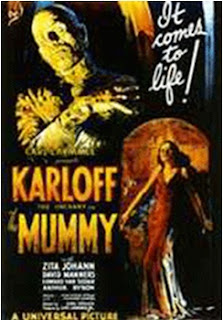What do teenagers listen to these days? Here you are going to know new music and the answer to the question in a top 5 of singers/bands. Hope you enjoy it!
NUMBER 5:
Emblem3 is an American reggae-pop band from Washington, consisting of brothers Wesley and Keaton Stromberg. They signed with Simon Cowell's (like One Direction) record label Syco Records and Columbia Records after finishing 4th on the second season of The X Factor USA. They launched their debut album called "Nothing to lose" on 2013 with Drew Chadwick, who later left the band, leaving E3's future uncertain.
They did a little tour and also performed at multiple festivals. They have done shows with many other artists like Jack & Jack (from Magcon, friends of Shawn Mendes) and they have a song with them called "Cheat codes".
They have a studio album, two extended plays and two singles with videos.
On The X Factor they performed good old songs like "Hey Jude" by The Beatles, "No One" by Alicia Keys and "Forever Young" by Alphaville.
GO AND LISTEN TO:
- Chloe (You're the one that I want)
- XO
- Forever Together
- Nothing to lose
NUMBER 4:
5 Seconds of Summer -abreviated as 5SOS- is an Australian pop-punk band formed in Sidney and consists of Luke Hemmings (lead vocals. guitar), Michael Clifford (guitar, vocals), Calum Hood (bass guitar, vocals) and Ashton Irwin (drums, vocals). They were youtube celebrities, posting videos of themselves covering songs. They toured with One Direction on the Take me Home Tour where they opened their shows.
They cite bands like McFly, Blink182, Green Day and Busted as their influencies.
5SOS became popular when a member of One Direction, Louis Tomlinson, posted the link to their youtube video of their song "Gotta get out" saying that he'd been a fan of 5SOS "for a while". The connection between 5sos and One Direction extends to both artists being managed by London based Modest management. This has led to 5sos being called a boy band in the media. Unlike many boys bands, they write their songs, play their own instruments and they are not a dance group.
They have one studio album, six extended plays, five singles and eight music videos. Also, on 15 December 2014, the band announced their first live slbum, LIVESOS. Now, they're doing new music and launched "She's kida hot", the first single of their second album.
GO AND LISTEN TO:
- She looks so perfect
- Amnesia
- Good girls
- Try hard
NUMBER 3:
Victorian Loren "Tori" Kelly (born December, 1992) is and American singer and songwritter who slowly gained recognition after starting to post videos on youtube at the age of 14. When she was 16, she auditioned for the singing competition tv series American Idol. After being eliminated if the show, Kelly began to work on her own music. In 2012, she launched her first EP that she produced, wrote and mixed herself, called "Handmade songs by Tori Kelly". Scooter Braun (manages a lot of singers like Justin Bieber and Ariana Grande) became her manager and introduced her to Capitol Records. Also, she can play the piano, drums and the guitar.
GO AND LISTEN TO:
- Dear no one
- Paper hearts
- Stained
- Celestial
NUMBER 2:
Shawn Peter Raul Mendes (born August 8,1998) is a Canadian singer. He began posting song covers on the popular video sharing application Vine. He caught the attention of Andrew Gertler and Island Records A&R Ziggy Chareton which led to him signing a deal with the record label and he realised his first single "Life of the Party" there.
Mendes toured as a member of the MagCon Tour where other young artists like Nash Grier and Cameron Dallas became popular. He was also on a tour with Austin Mahone as an opening act and recorded his EP. Now he is touring with Taylor Swift with his album debut called "Handwritten".
He did a song as featured artist with the band The Vamps, called "Oh Cecilia (Breaking My Heart)" and he is a friend of Ed Sheeran too.
GO AND LISTEN TO:
- Life of the Party
- A little too much
- Believe
- Air
NUMBER 1:
Edward Christopher Sheeran (born 17 February 1991) is and English singer-songwritter and musician. In early 2011, Sheeran did an independent extended play, "No. 5 Collaborations project", which caught the attention of both Elton John and Jamie Foxx: then he signed with Asylum Records.
Sheeran popularity abroad began in 2012. He made a guest appereance on Taylor Swift's album and wrote songs for One Direction. On 2013 Grammy Awards, he performed "The A team" with Elton John. Also, he performed 3 sold out concerts at Madison Square Garden and Wembley Stadium.
He started touring with Taylor Swift, where he opened her shows. Then he did his own tours called "+ Tour" and "x Tour".
GO AND LISTEN TO:
- The A team
- Thinking out loud
- Don't
- Give me love
This is the end of our TOP 5: SINGERS. Stay tuned for the next TOP 5: SERIES!
Santiago Vanella, Jazmín Mendoza and Iván Menoni - 4th Year
































